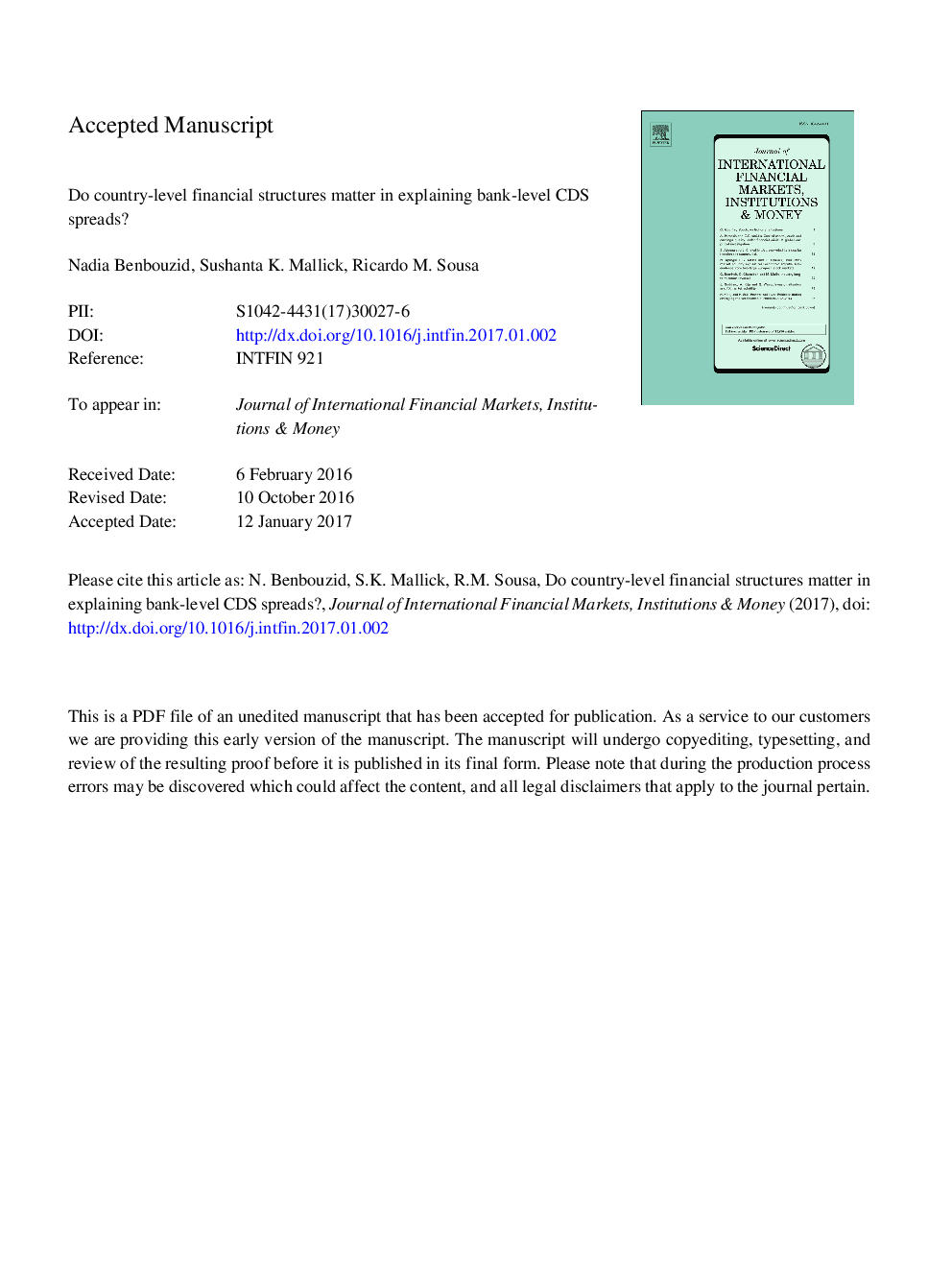| Article ID | Journal | Published Year | Pages | File Type |
|---|---|---|---|---|
| 5101002 | Journal of International Financial Markets, Institutions and Money | 2017 | 28 Pages |
Abstract
The existing literature has typically focused on bank-level characteristics to uncover the main drivers of bank CDS spreads. In this paper, we use data for 58 banks from 15 countries over the period 2004-2011 to assess whether country-level factors also explain variations in bank CDS spreads. In particular, we focus on financial structure indicators (namely, financial stability, depth, access and efficiency) and country risks (i.e. economic, financial and political rating risks) to explain why some banks experience higher levels of credit risk relative to others across countries. We find that while country-level financial instability is associated with higher credit risk; bank-level profitability, liquidity and improved asset quality are linked with lower credit risk. In addition, although country-level financial depth (as an indicator of credit bubble) contributes to higher CDS spreads, house price appreciation tends to dampen credit risk.
Related Topics
Social Sciences and Humanities
Economics, Econometrics and Finance
Economics and Econometrics
Authors
Nadia Benbouzid, Sushanta K. Mallick, Ricardo M. Sousa,
